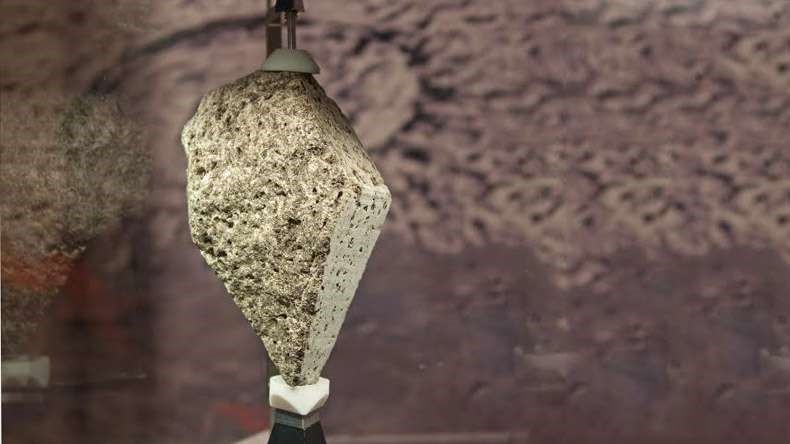
For all our far-reaching cosmic predictions, we’re still unsure how old the Moon is. New evidence found in rocks gathered during NASA’s Apollo 14 mission dates the Moon’s creation to 4.51 billion years ago — 210 million years earlier than previously believed.
Knowing the Moon’s true age gives us a more accurate frame of reference for understanding the actual age of Earth and “when it started to evolve into the habitable planet we know today,” Mélanie Barboni, the study’s lead author and UCLA research assistant, said to Electronic Products in an email.
Knowing the Moon’s age helps us understand Earth’s age
Previous estimates suggest that the Moon formed 4.3 billion years ago from debris left over in the wake of a colossal impact between proto-Earth and a smaller, planet-like object called Theia. The event’s timing dictates the earliest starting point from which life could’ve begun on Earth; “whatever proto-Earth looked like before was wiped by the impact,” said Barboni.

The gap between the 4.51-billion- and 4.3-billion-year timeline offsets natural history by 210 million years, enough to support a separate UCLA research proposing that the friendly condition needed to support life — colder temperature, atmosphere, and water— may have appeared as early as 4.1 billion years ago.
“Having a moon-forming impact at 4.3 Ga would leave very little time to develop these conditions. At 4.51 Ga, you have much more time to transform the Earth from hellish to nice,“ said Barboni. Going one step further, the Moon’s age provides astrophysicists with accurate information for modeling how much time is needed to form the Earth-Moon system in the early stages of the solar system.
How the Moon was dated
Barboni and her team dated the Moon by applying the ID-TIMS dating technique to lunar samples of the mineral zircon found within some of the rocks brought back by the Apollo 14 mission in 1971. Zircon crystallizes from magma and remains unchanged over billions of years, suggesting that it may have originated from magma in the lunar interior erupting onto the surface when the Moon was volcanically active. Similar to carbon dating, studying zircon’s radioactive rate of decay is a key technique in determining when the Moon’s surface solidified and is often used to date rocks on Earth.
Zircon “is the most robust and reliable time capsule that can be found on the Moon (and on Earth)! It is amazingly sturdy and will resist most of the disasters that could come its way, including meteorite impacts,” said Barboni. The zircon brought back by the Apollo mission is believed to have crystallized near the end of the solidification Lunar Magma Ocean (LMO), incorporating two chemical elements that hold distinct temporal information: uranium and hafnium. “This gives geochemists two radiometric clocks, Uranium-Lead (U-Pb) and Lutetium-Hafnium (Lu-Hf), that, when conjointly used, allows us to precisely date when the Lunar Magma Ocean solidified — when the Moon formed.”

Radioactive isotopes have unique decay patterns and convert to by-products at specific rates, regardless of sample size. Comparing the ratio of a naturally occurring radioactive isotope within a material — the zircon — to the abundance of its decay product establishes an accurate age prediction of the rock. Analyzing the ratio of uranium to lead suffices is usually enough to date rocks containing zircon found on Earth, but the Moon was much older than when zircon crystallized on its surface — that’s why Barboni measured the pair of elements: hafnium and lutetium.
Just like uranium, hafnium appeared when the matter first settled into an inner mantle surrounded by a crust during the early stages of the Moon’s formation. The process should have altered the ratio of lutetium and hafnium within various regions of the Moon and provides a clue as to when the differentiation occurred, back when zircon was informed.
What makes Barboni’s work unprecedented is that her technique is the first to completely dissolve of a hunk of zircon into multiple elements by “cleaning” it with an acid bath. Zircon’s low abundance makes this a risky move. If a section of zircon is dissolved containing the wrong mineral makeup, then the entire radiometric dating gets thrown off. Having already foreseen such a potential issue, Barboni and her team took the necessary precautions. “But we were, of course, aware of that potential complication and thoroughly checked that. We measured the leachates as well as the residue (both for U-Pb and Lu-Hf) and showed that it was not a problem. We are lucky that the Apollo zircons are fragments that show very little chemical variation — leaching was mostly removing impact-induced melt, but not much zircon.” You’ll find a detailed rundown of the procedure in the journal Science, where the research is published.
If Barboni’s research proves accurate, it means that early life may have formed as late as 4.1 billion years ago, as opposed to the 3.8-billion-year timeline of conventional thought.
Advertisement
Learn more about Electronic Products Magazine





